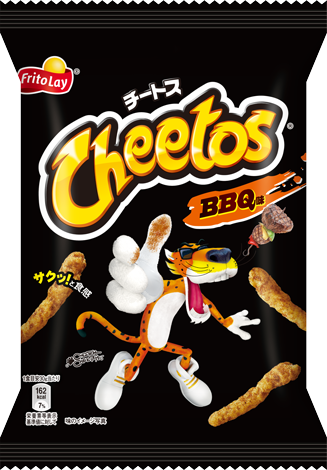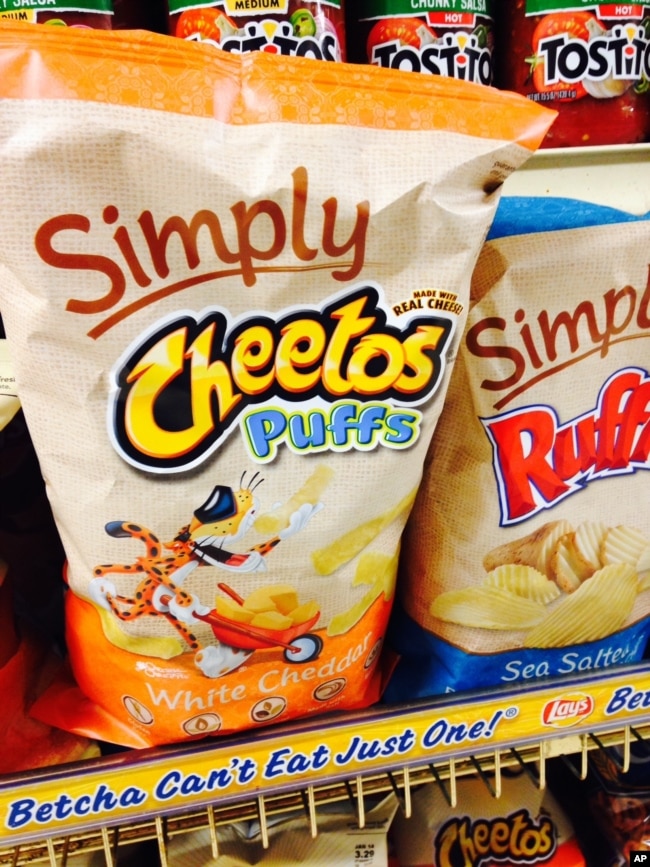M&M candy と World War II
Oh!!!マーブル チョコレート!!!
一気にテンション高めの私、
なのに??? Military???
意外性で引き付けられる タイトルって 重要ですね。
写真の説明文を読んで、納得!!!
そういうことね!!! 戦争の中、そういう発想出来るアメリカってすごい!!
またまた、Oh!!!マーブル チョコレート!!!
では、早速 VOAニュースより。
米軍はいかにしてアメリカの好きなお菓子を発明したのか
How US Military Invented America’s Favorite Snacks
learningenglish.voanews.com
今日アメリカで人気のあるスナック菓子の多くは、有名なレストランのコックが発明したのではなく、米軍の食品科学者が発明したものです。インスタントコーヒーやチートスから、パッケージ化されたクッキーやエネルギーバーまで、これらの軍の科学者たちは、兵士のために、簡単に持ち運び、保存し、食べることができる食品を作ることを任務としていました。これらの食品の発明は、第二次世界大戦中に加速しました。当時、軍の科学者たちは、小さくても栄養価の高い兵士用の食品を開発する必要がありました。アナスタシア・マルクス・デ・サルセド氏はVOAニュースに、軍隊が近代的な食糧を開発する必要性があったと語っています。これを行うために、軍は多くの新しい食品加工技術を見つけなければならなかったと、フードライターは説明しています。それはまた、今日まで存在する食品科学の研究システムを作成しました。彼女の著書Combat-Ready Kitchen: How the U.S. Military Shapes the Way You Eatで、マルクス・デ・サルセド氏は、その歴史をこう説明しています。新しい技術には、高圧処理が含まれています。このプロセスは、調理されていない食品が安全に食べられるようにするものです。これは、guacamole, salsa, and hummusなどのパッケージ食品によく使われています。
アメリカ人の好きなチーズ味のスナックの一つであるCheetosもその一例です。それらは脱水工程を使って作られています。軍の食品科学者たちは、チーズから水分を取り除く方法を発見しました。これにより、チーズが腐るのを防ぎ、海外の軍隊に輸送する際の軽量化を図ることができました。軍食製造の科学者たちは、軍医が戦場で兵士を治療する方法に目を向けました。彼らは新鮮な血液製剤を運ぶために凍結脱水を使用しています。科学者たちも同じプロセスを使っていました。「戦争が終わった後、凍結脱水産業は少しだけありました。しかし、もはや目的を持っていませんでした。」とマルクス・デ・サルセド氏はいいます。そこで、軍は凍結脱水を使った食品の開発を始めたのだと彼女は説明します。これにより、フリーズドライのコーヒー、紅茶、スープができるようになったと彼女は付け加えています。NASAはこのプロセスを利用して、宇宙飛行士のためにフリーズドライ食品を作りました。しかし、宇宙飛行士たちは、フリーズドライ製品の味が好きではなかったのです。そこで軍は、その食品をより美味しくする方法を見つけました。軍の科学者たちはまた、ペットフード会社が脱水を使って水分量を減らしながらも、フードが完全に乾燥しないようにしていることを発見しました。マルクス・デ・サルセド氏は言います。「それがわかってからは、常温でも通常の包装でも、フードをしっとりとさせることができるようになったのです。」と。彼女は、この技術は焼き菓子でも使用されているとも言っています。今日、私たちが店で買っているしっとりとしたクッキーは、この軍の研究の成果なのです。
また、アメリカ軍がヨーロッパで見つけたハードキャンディーに包まれたチョコレート菓子もコピーしました。兵士たちはキャンディをポケットに入れて持ち歩くことができ、チョコレートが溶けることもありませんでした。こうして大人気のM&Mキャンディーが誕生したのです。今日では、軍の大物研究者の中には、極端な熱でも溶けないチョコレートの研究を続けている人もいます。最近の軍用食品科学の次のレベルは、ミニ食品の形で到来しました。これは、通常の3分の1の大きさに縮小された食品です。「彼らは、食品の水分量を減らすためにマイクロ波真空脱水を使用しています 。」とマルクス・デ・サルセド氏は言います。これにより、より小さくなっても同じ量の栄養が含まれている食品ができます。兵士には便利ですが、アメリカの民間人がいつの日か、小さな脱水食品の昼食を持ち歩くようになるかどうかは不明です。
Cheetos (チートス)


 ☜新製品
☜新製品
guacamole (ワカモレ/ガカモレ)
しっかりした塩気にオニオンが効いた甘味と
ほのかな酸味が、パリパリの食感と
よくマッチしています。
鮮やかなグリーンのチップスは、
料理の付け合せにもオススメ。

salsa

![送料無料][12個]エル・サブロッソ スパイシーサルサチップス 85g 賞味 ...](https://msp.c.yimg.jp/images/v2/FUTi93tXq405grZVGgDqG7kUadTUY5EnzwWgrpDJCJsTjpIfj5vX6Dn4-YFmTHQ8r0vnZMrlRI1t_m4PYC4BtBePp2Il3zWe6168KISns8SkQI4rbzGOdf950i3epEA6U_SGE4oTRZXTbGnwI59IPxCHugWmT3WX0oCx7pULIA00Ig2S5jHMyLlM8UYcktnRMgGMU4GkcgUXTvoAAuQAsMYmUqO4VLobg-L07yxXpZE8RKam306wno94yRDdrwes0Vyec_etAx7fcScjfb7I_w==/000000004030_JnwWmOj.jpg?errorImage=false)
Hummus(ハマス/フムス)
HUMMUSのメイン食材である「Chickpeas(ひよこ豆)」はスーパーフードとして知られています。たんぱく質は木綿豆腐の約3倍、ビタミンEはほうれん草の約1.2倍、葉酸はモロヘイヤの約1.4倍と豊富に含まれており、非常に栄養バランスの良い健康的な食材です。https://www.kurakon.jp/hummus/english.html
日本でハマスを作って販売されてるKURAKONのH.P.より
☟種類も色々
Hummusというのはイスラエルやトルコ、エジプトなどの中東地域発祥で、前述の通り、豆からできたペースト状の料理のこと。ひよこ豆を煮て柔らかくしたものに、「タヒニ」というごまペーストやニンニク、オリーブオイル、レモン汁、スパイスなどを混ぜ合わせディップでいただきます。独特の酸味がありますが、一度食べると止まらなくなる味。ピタチップスと呼ばれるぶ厚目のチップスをディップして食べるのが本場の食べ方のようですが、野菜スティックで食べたり、サンドイッチを作る際のマヨネーズがわりに使ったりすると、よりヘルシーです。

How US Military Invented America’s Favorite Snacks
Many food snacks popular today in the United States were not invented by a cook at a famous restaurant, but rather by food scientists in the U.S. military.
From instant coffee and Cheetos to packaged cookies and energy bars – those military scientists were tasked to make food for soldiers that could be easily carried, stored, and eaten.
The invention of these foods sped up during World War II. At the time, military scientists needed to develop small, but nutritious food for troops.
Anastacia Marx de Salcedo told VOA News that there was a great need for the military to develop modern rations.
To do this, the food writer explains, the military had to find many new food processing techniques. It also created a food science research system that exists to this day.
In her book, Combat-Ready Kitchen: How the U.S. Military Shapes the Way You Eat, Marx de Salcedo explains that history.
The new techniques include high-pressure processing. This process ensures that uncooked food is safe to eat. It is commonly used in packaged foods like guacamole, salsa, and hummus.
Cheetos, one of America’s favorite cheesy snacks, is another example. They are made using a dehydration process. The military food scientists found a way to remove the water from cheese. This kept cheese from going bad and made it lighter to transport to troops overseas.
The scientists behind military food production looked to the way army doctors treat soldiers on the battlefield. They use freeze dehydration to carry fresh blood products. The scientists used the same process.
“After the war ended,” says Marx de Salcedo, “there was a little freeze-dehydration industry. But they no longer had a purpose.”
So, she explains, the military began developing food products with freeze-dehydration. This, she adds, gave us freeze-dried coffee, tea, and soups.
NASA used this process to make freeze-dried foods for its astronauts. However, the astronauts did not like the taste of the freeze-dried products, which were really early versions of the modern energy bar. So, the military found ways to make the food taste better.
Military scientists also discovered that pet food companies were using dehydration to lower water content, but still keeping the food from getting completely dry.
“Once they figured that out,” says Marx de Salcedo, “they were able to keep foods moist…at room temperature and with regular packaging.”
She adds that this technique is also used with baked goods. The moist cookies we buy in the store today are the result of this military research.
The military also copied a chocolate snack wrapped in hard candy that U.S. troops had found in Europe. The soldiers could carry the candy in their pockets and the chocolate would not melt. And that is how the very popular M&M candies were born.
Today, some of the biggest military researchers continue to search for a chocolate that does not melt under extreme heat.
The next level of military food science arrived recently in the form of mini-food. This is food that is shrunk to one-third of the normal size.
“They use microwave vacuum dehydration to reduce the water content of foods,” says Marx de Salcedo. This creates food that is smaller but still contains the same amount of nutrition.
While useful for soldiers, it remains unclear if American civilians will one day carry small, dehydrated lunches for their workday.
_______________________________________________________________
Words in This Story
snack – n. small amount of food eaten between meals
instant – adj. partially prepared by the manufacturer to make final preparation easy
package – n. a wrapper or container that covers or holds something
tremendous – adj. very large or great
rations – n. a particular amount of food that is given to one person for one day
technique – n. a way of doing something by using special knowledge or skill
dehydration – n. the process of removing water from something
pet – n. an animal (such as a dog, cat, bird, or fish) that people keep mainly for pleasure
baked goods – n. cookies, cakes, other snacks made with butter, flour and sugar
candy – n. a sugary snack
microwave vacuum – n. a very short wave of electromagnetic energy that removes water

